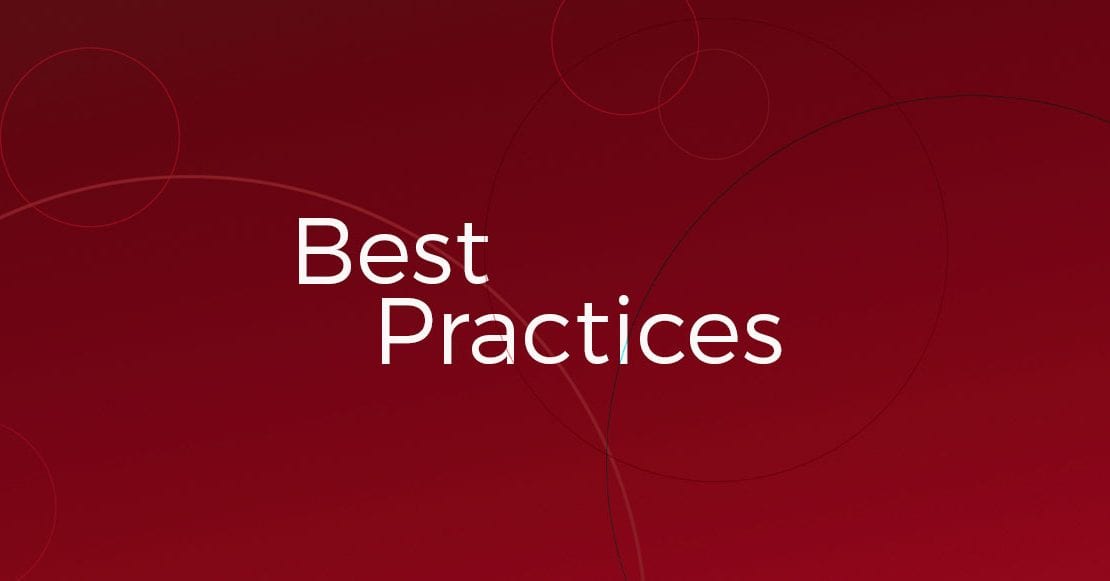Editor’s note: this guest post is from Charesse Spiller, Founder and Operations Consultant at Level Best. She led the Practice Management Takeover webinar we hosted on Tuesday, April 13th, 2021, a replay of which can be viewed here.
Maximize Your Client Journey for Ultimate Scalability
A streamlined client journey is critical both for the overall client experience and for creating a scalable practice. Through Level Best, we help financial advisors organize their operation and processes to continue to improve their business. In the past five years of working with advisors, we’ve consistently seen that six processes act as the foundation for the financial planning client journey:
1. Technology mapping
2. Client service calendar
3. Daily operations
4. Sales
5. Onboarding
6. Review Meetings
Technology Mapping & Client Service Calendar
You may think that auditing your tech stack isn’t necessarily a process that fits into your client journey. However, the technology you use, and how your clients interact with different platforms, is the baseline that all of your processes will be built on. So, before you start perfecting your processes, you need to select your tech stack. If ever you decide to switch technology, it kicks off the work of redeveloping your processes all over again, which means it’s important to get it right the first time!
Once you have your technology selected, and you understand how clients will interact with each piece of tech your firm uses, you can move on to create a client service calendar. Carefully evaluate whether or not your firm’s technology and calendar adequately meet the needs of your clients based on the service model you choose to follow. For example, one-time plan clients will require different tech and service calendars than ongoing investment management clients.
Your client service calendar should be built around all client touchpoints. For most firms, I recommend constructing these on an annual basis. Usually, if a firm’s service model is ongoing wealth management or financial planning, it can also be wise to have both a “Year One” and a “Year Two And Beyond” calendar, as they will likely look dramatically different from one another.
Some touch points to consider incorporating into your calendar might be:
1. Any “wow” factors that engage clients and generate referrals
2. Planning meetings
3. Check-in calls
4. Holiday gifts or cards
5. Team member service calls
A client service calendar can and should leverage your tech stack as much as possible to ensure you’re maximizing your budget. In fact, it’s almost impossible to perform a tech stack evaluation without having a granular understanding of an advisor’s service calendar. The two are so closely related that one informs the other, and vice versa.
It can be tempting to dive into the weeds when it comes to perfecting your processes and creating scalable systems. However, firms need to remember that these foundational processes impact you, your team, and your clients. Taking the time to truly dig into your tech stack and service calendar allows you to create a strong foundation for your business to grow and scale successfully, and without too many hiccups.
Daily Operations
Once you’ve defined your tech stack and your service calendar, you can use those processes to create the workflows and checklists that define your daily operation. Typically, these processes are built in the firm’s CRM.
For example, if you know that part of your service calendar is to reach out to all clients prior to open enrollment, you may have a workflow specifically for a Q3 client meeting that includes an initial service call from a client service representative, scheduling a meeting with a client if they need to reevaluate their benefits, meeting prep, following up with post-meeting action items, and checking in to ensure that action items were completed by the advisor or the client.
Sales
Your sales process should include a prospecting toolkit, a method for tracking business opportunities, a standard follow-up procedure, and a resource library for any supporting documents. In general, your sales process should be both repeatable and scalable. In other words, you don’t want to overcomplicate things. Have templated email responses and supporting documents that can be used for any prospect you speak with to make your life easier! The ultimate goal of this process should be to not let any opportunities fall through the cracks without requiring a lot of manual follow up.
Onboarding
For onboarding, you want to provide a stellar client experience from the start of the relationship. Focus on creating user-friendly data gathering, and engaging the client in meaningful conversations that help them get to know you and develop confidence in your firm. When the Level Best team works with advisors, we recommend having a toolkit available to make this process a success, and ensure your client feels adequately guided through onboarding. Every advisor’s toolkit will be different depending on their service calendar, and their clientele.
Review Meeting Process
Review meetings are more than a casual check-in. They are touchpoints that nurture the client relationship. When we work with advisors, we help them develop a process that includes:
1. Scheduling
2. Data gathering
3. Conducting the meeting
4. Meeting review
5. Follow-up
6. Booking the next meeting
Why Are These Processes Integral to the Client Journey?
These six processes are what I call “foundational processes” because they truly are foundational to a financial advisor’s operation. Each of these processes is a key client touchpoint and makes up an integral part of a client’s journey. These six processes are also important for scaling your team, as they’ll be critical for any future team member to be cognizant of if they want to maintain customer service.
It’s important for all financial advisors to remember that, at the end of the day, they’re growing a service-based business. By spending time and energy cleaning up the processes that impact the level of service they can provide, they’re more likely to find success through signing more clients and maintaining existing relationships.
Looking to Shift Your Mindset?
In the world of financial planning, advisors often get caught up in only continuing their education when it comes to planning topics. However, as a business owner, it’s important to occasionally take off your advisor hat and tune into what it means to be an entrepreneur.
Part of entrepreneurship is developing processes that meet your service-based business needs. I recommend a few books to clients consistently that serve this purpose:
eMyth Revisited – For those who struggle with balancing working “in” the business versus “on” the business.
Built to Sell – For those who are in the weeds of their successful practice but aren’t focusing on long-term growth. Note: This book isn’t only about selling your business, but also highlights how to create a business that can function without you – which is important for any entrepreneur who wants to achieve work/life balance!
The Business of Expertise – For those who are longing for structure on how they deliver financial planning advice to clients.


